13.-19.02.2023
From 13 to 17 March 2023, members of the Materi-A-Net-Team (Arthur Acker, Aleksandra Lipińska, Wolfram Kloppmann) conducted a research trip to Lorraine and Franconia in order to visit historical alabaster quarries and examine art works in these regions. For this purpose we visited sites of historical quarries, museum collections and churches in order to take material samples of sculptures, conduct a photographical documentation (including 3D-scans) from artworks. On the first day of our trip, thanks to the support of the curator of the Musée Lorrain in Nancy Frédérique Gaujacq-Didier, we had the opportunity to sample and photograph alabaster sculptures of this collection.
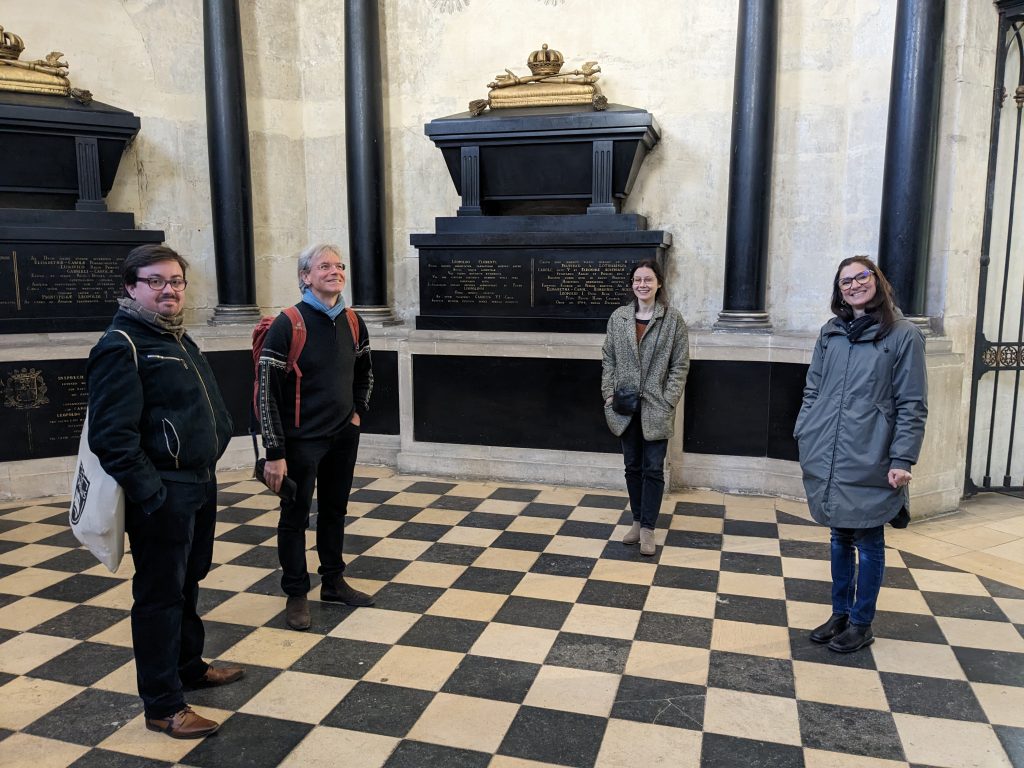

The following day, accompanied by Dr. Lise Leroux, geologist at the LRMH, the French laboratory for historical monuments, we visited the presumed sites of alabaster quarries eastern and southeastern Nancy, in Moncel-sur-Seille, Vic-sur-Seille and Vitrimont.There we were able to trace the material and take samples of alabaster.
There we were able to trace the material and take samples of alabaster. We also visited the Saint-Léger collegiate church of Marsal where, with the support of the municipality’s mayor Didier Bernard, we studied and took samples of the tomb of the family of the count of Salm.

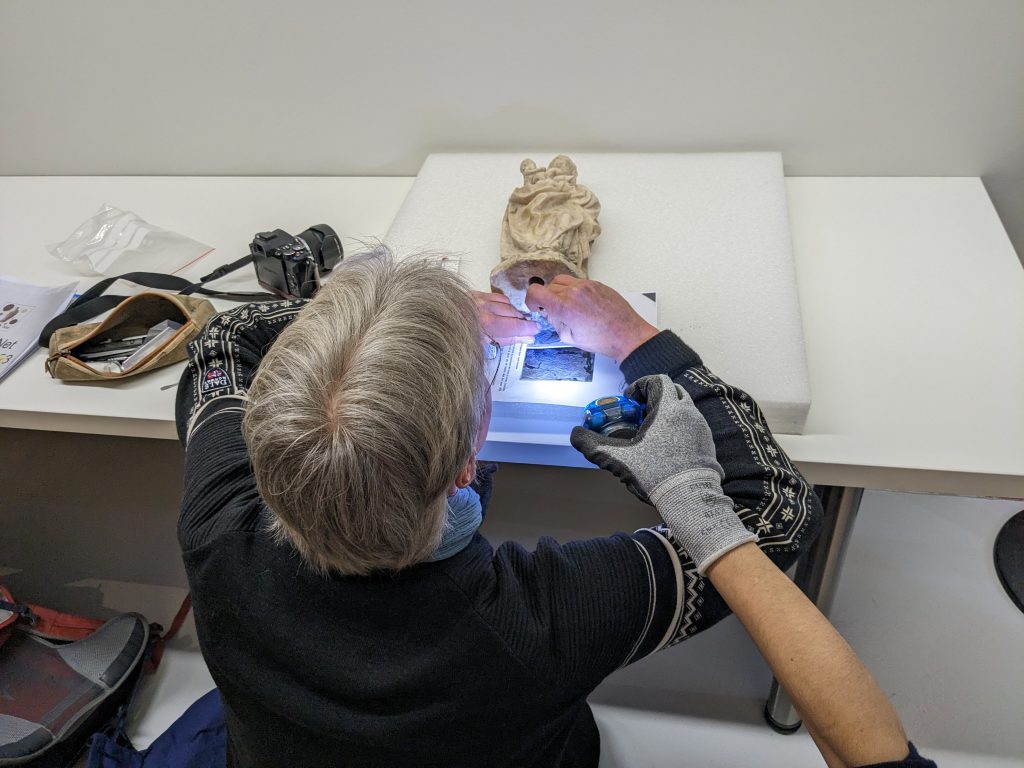
The next visited collection was the Georges de la Tour Museum in Vic-sur-Seille housing a figurine of Notre-Dame-de-Bethléem, which could be sampled and photographed as well.
From there, we headed towards Würzburg, in northern Bavaria. First station in the episcopal city was the Museum am Dom where, together with the curators Wolfgang Schneider and Christoph Deuter, we discussed, photographed and sampled a Pietà ascribed to the circle of the Rimini workshop.
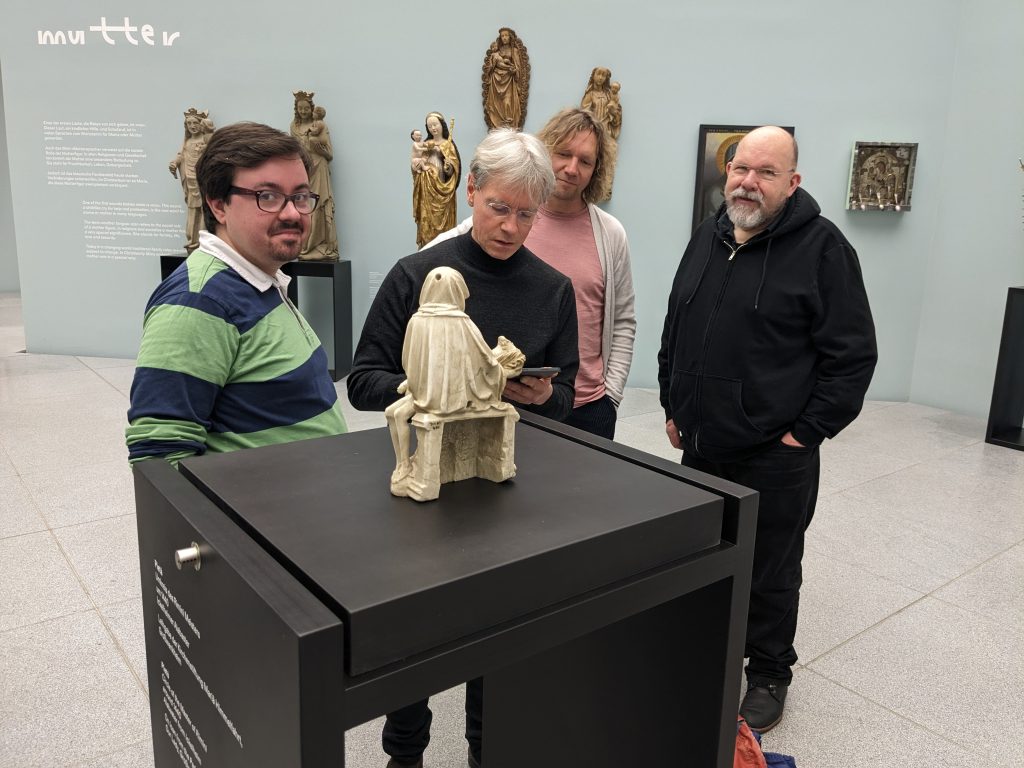

The research continued in the Kiliansdom, including the sampling of the pulpit and the tomb of the prince-bishop Julius Echter, both works of the early 17th-century.

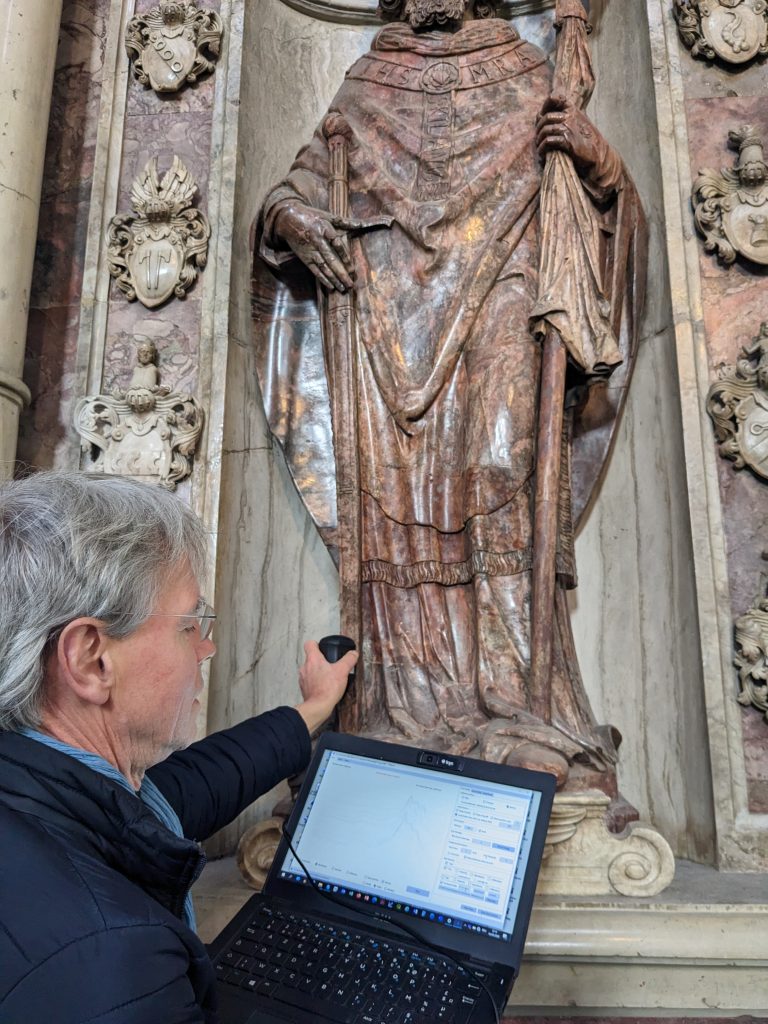
Thanks to an application of a portable spectrometer, an unexpected discovery could be made: the red material of which the tomb of Bishop Echter is made of, so far considered to be marble (or red polishable limestone) is an alabaster indeed.
This is a very unusual colour for the material, that is why further research needs to be done in order to confirm the hypothesis. In the following day the sculptor and project partner Thomas Hildenbrand, joined us during the examination of a set of alabaster sculptures from the altarpiece by Zacharias Juncker the Elder originating from an altarpiece in the former Charterhouse of Engelgarten, preserved in the collection of the Martin von Wagner Museum.
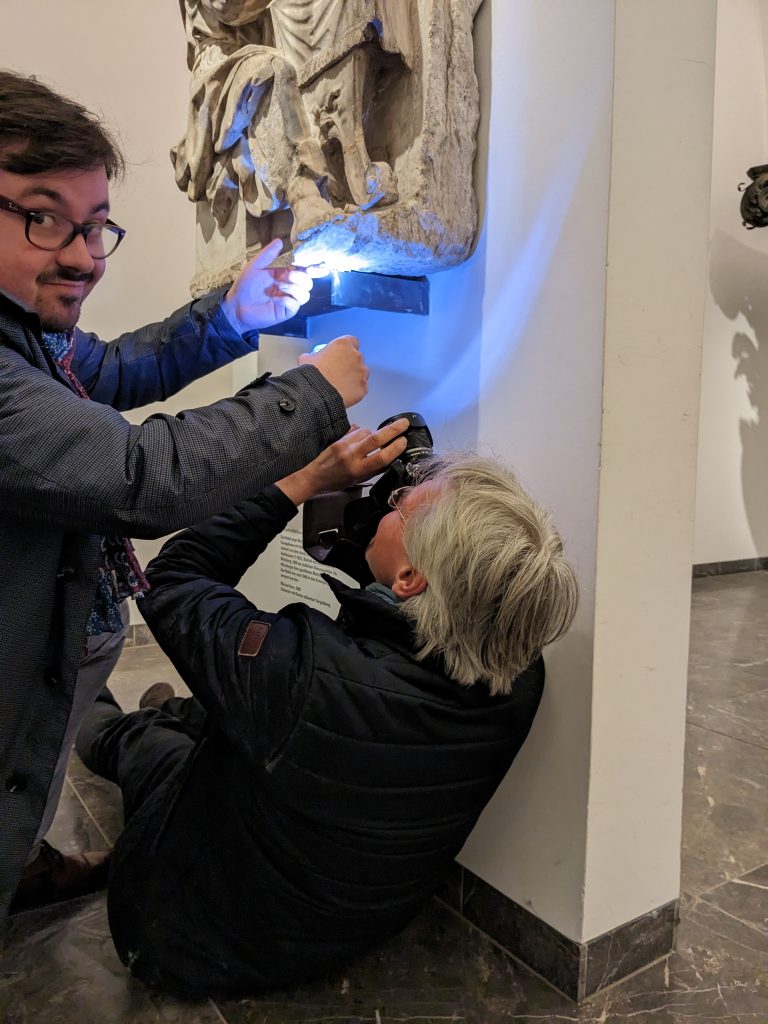
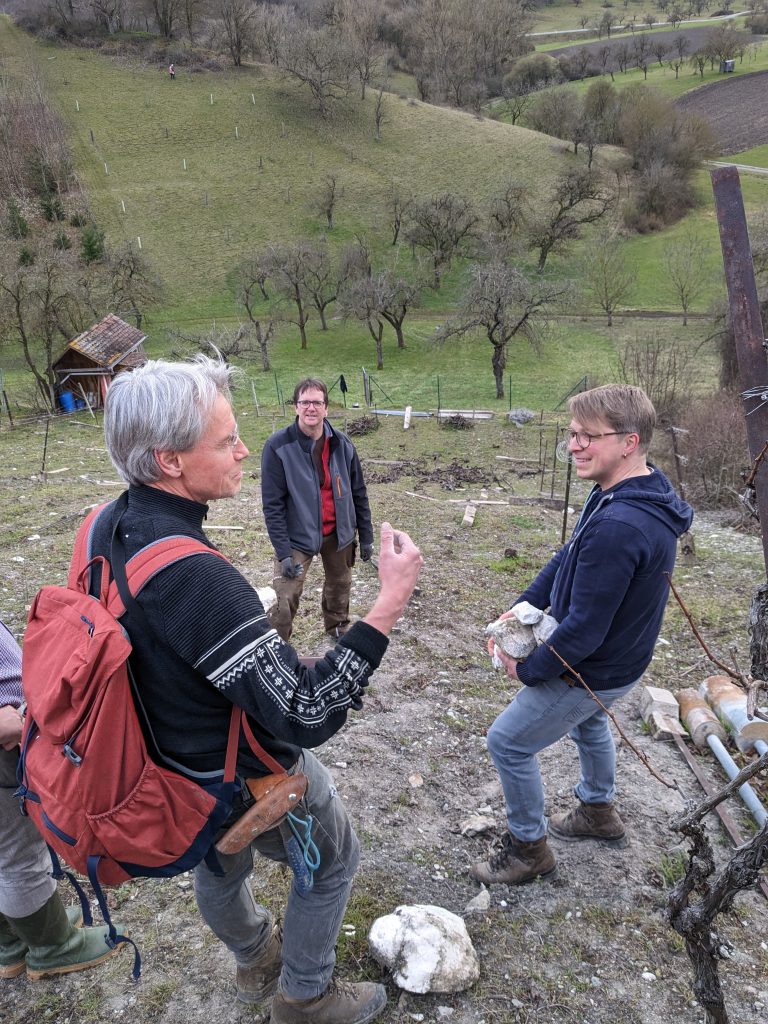
The trip ended with a visit to Ickelheim, Bad Windsheim, to inspect the alleged site of former alabaster quarries with the help of Robert Binder, member of a local group of history enthusiasts. There we traced the remains of an old quarry and collected samples of the local alabaster.